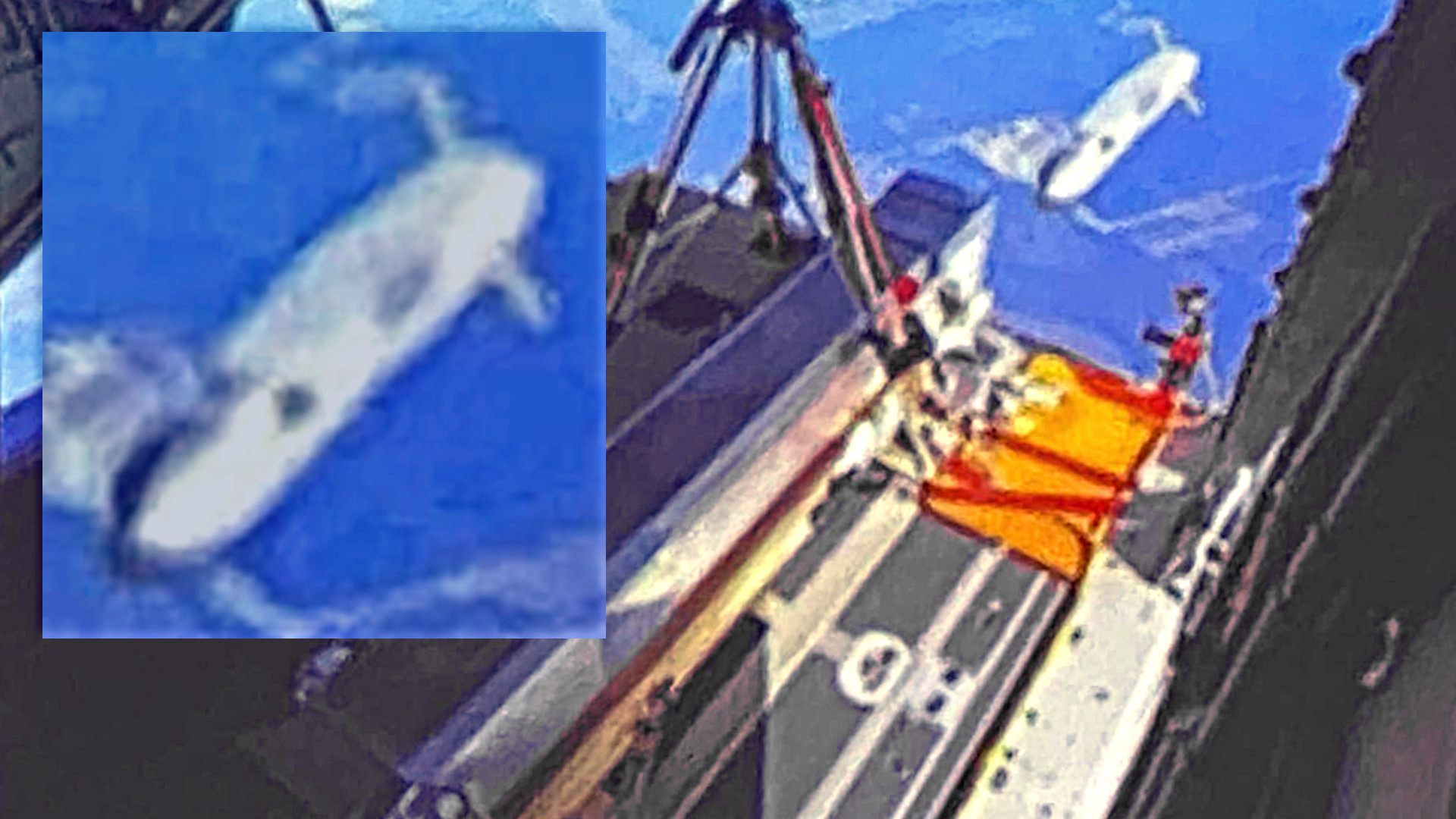We now have our first glimpse of a mini-cruise missile U.S. Special Operations Command (SOCOM) is currently developing and says is one of its top priorities. The weapon could be launched from AC-130J Ghostrider gunships and MC-130J Commando II special operations tanker/transport aircraft, and potentially other platforms. New stand-off strike capabilities like this are seen as key to ensuring the relevance of aircraft like the AC-130J and MC-130J in future high-end conflicts, such as a potential one in the Pacific against China.
A picture, seen at the top of this story, showing what SOCOM is simply calling the Small Cruise Missile being test launched was included in briefings at the annual SOF Week conference, which kicked off on Monday. That test was conducted sometime in the last six months, U.S. Air Force Lt. Col. Jason Lee, head of SOCOM’s Detachment 1 at Eglin Air Force Base in Florida, told The War Zone and other attendees at SOF Week earlier today.
“We’re continuing forward on that,” Lee said about progress on the Small Cruise Missile effort.
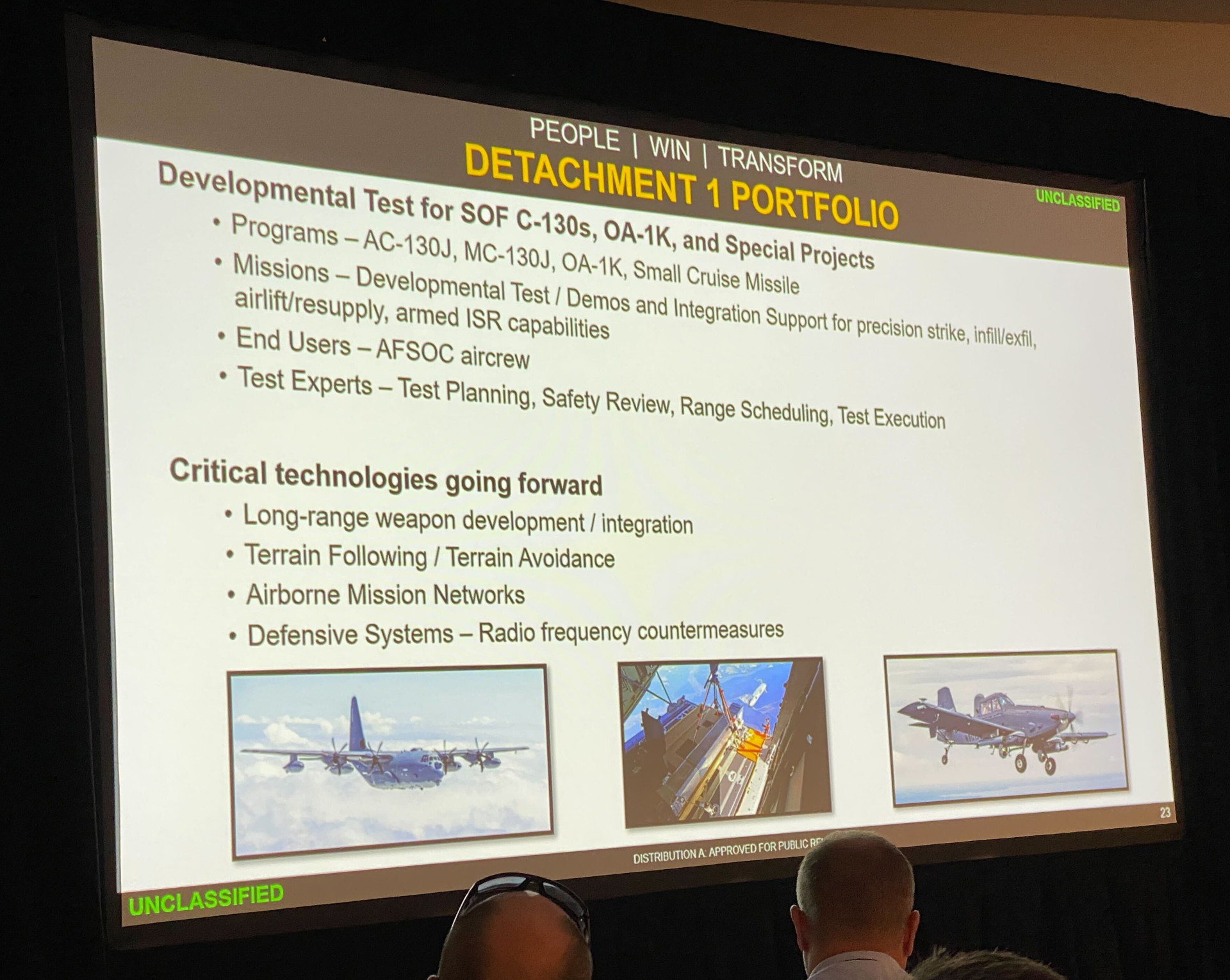
The picture from the Small Cruise Missile Test is very low quality and it is difficult to make any significant details about the design. It does appear to have an x-shaped tail fin arrangement and apertures on its body. From what can be seen, there do appear to be some broad similarities between this weapon and the ADM-160 Miniature Air-Launched Decoy (MALD). The former could potentially be related in some way to the latter, but at this time, we don’t know.

It is also seen being launched rearward from a square-edged container strapped to the rear cargo ramp of a C-130-type aircraft. Otherwise, details about the Small Cruise Missile design remain limited.
In 2021, SOCOM did issue a contracting notice regarding a Stand-Off Precision Guided Weapon Program Cruise Missile outlining interest in a weapon of this type with a range of between 200 and 400 nautical miles (around 230 and 460 miles or nearly 370.5 and almost 741 kilometers) that could fit inside a standardized cylindrical Common Launch Tube (CLT). CLTs are in widespread use within the U.S. special operations community, as well as the rest of the U.S. military, as a means for launching various munitions and other payloads from different crewed and uncrewed fixed-wing aircraft, as well as helicopters. The CLT can accommodate payloads up to 42 inches in length and 5.95 inches in diameter, and has a 100-pound weight limit, according to a separate SOCOM contracting notice issued around the same time. It is unclear how feasible it would be to design something that meets these requirements with a 200-nautical-mile range, let alone the ability to hit targets out to 400 nautical miles.
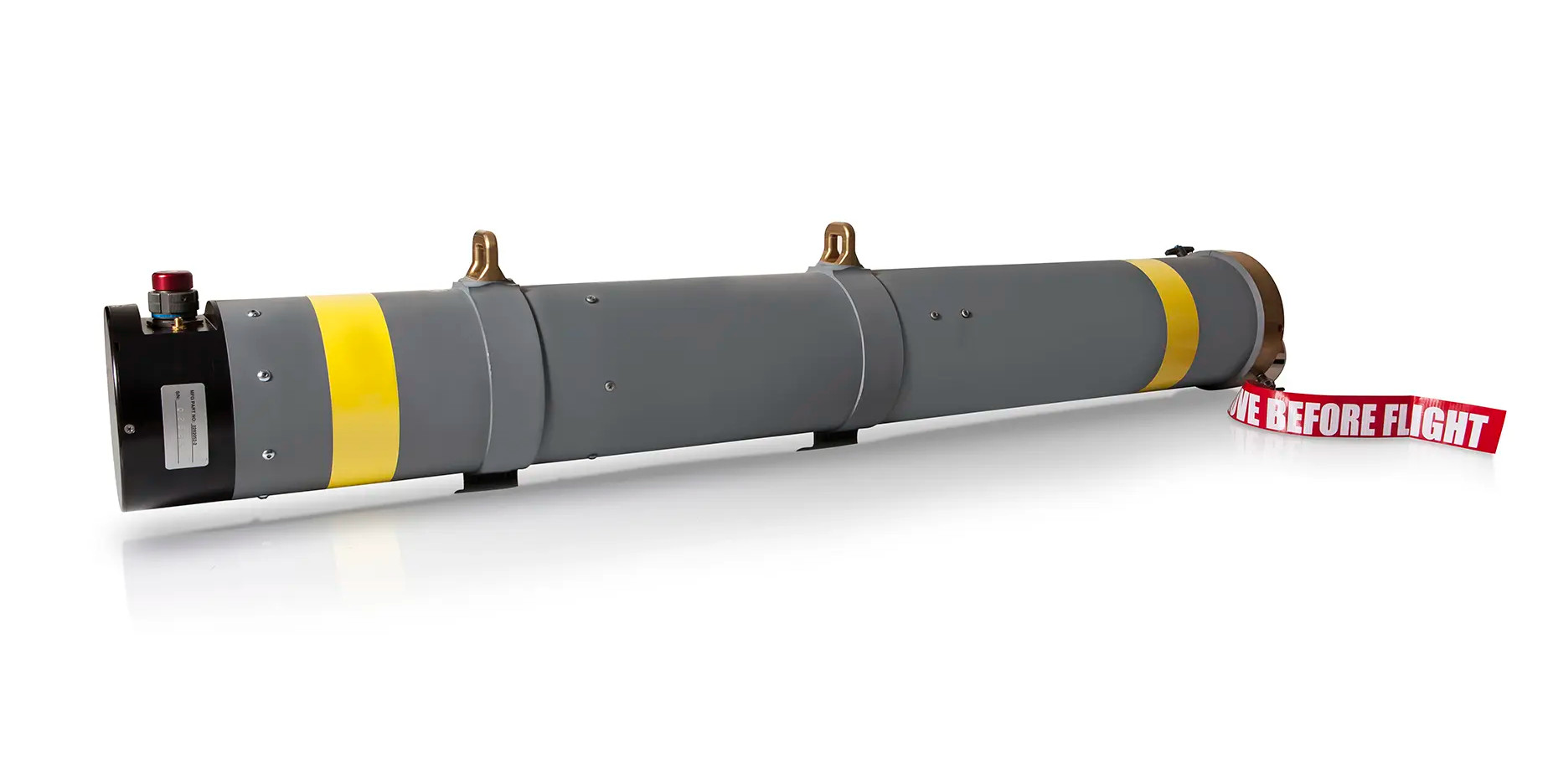
The Stand-Off Precision Guided Weapon Program Cruise Missile notice also called for the system to “include, at threshold, an EO/IR [electro-optical/infrared] seeker and as an objective incorporate a multi-mode seeker package able to acquire and/or reacquire targets in flight.” Furthermore, the weapon “at threshold… shall have a removable payload section that can accept 13lbs of warhead or other desired payload (objective of 37 lbs), compatibility with an X-Net radio, electric propulsion, and an INS/GPS (M-Code) capability.”
Other “key attributes include the long range, data link connection to Situational Awareness Data Link (SADL) (threshold) and SADL/Link-16 (objective), resilient GPS/INS to work in a denied GPS environment, a sensor capable of identifying targets once over the target area, and a payload to effect the target,” the notice added.
As described in the contracting notice three years ago, this small cruise missile would offer U.S. special operations aircraft, including AC-130Js and MC-130Js, a highly flexible stand-off strike capability against static and moving targets. The missile would also greatly outrange the existing weapons in what SOCOM calls its Stand-Off Precision-Guided Munitions (SOPGM) arsenal, at least that we know of.
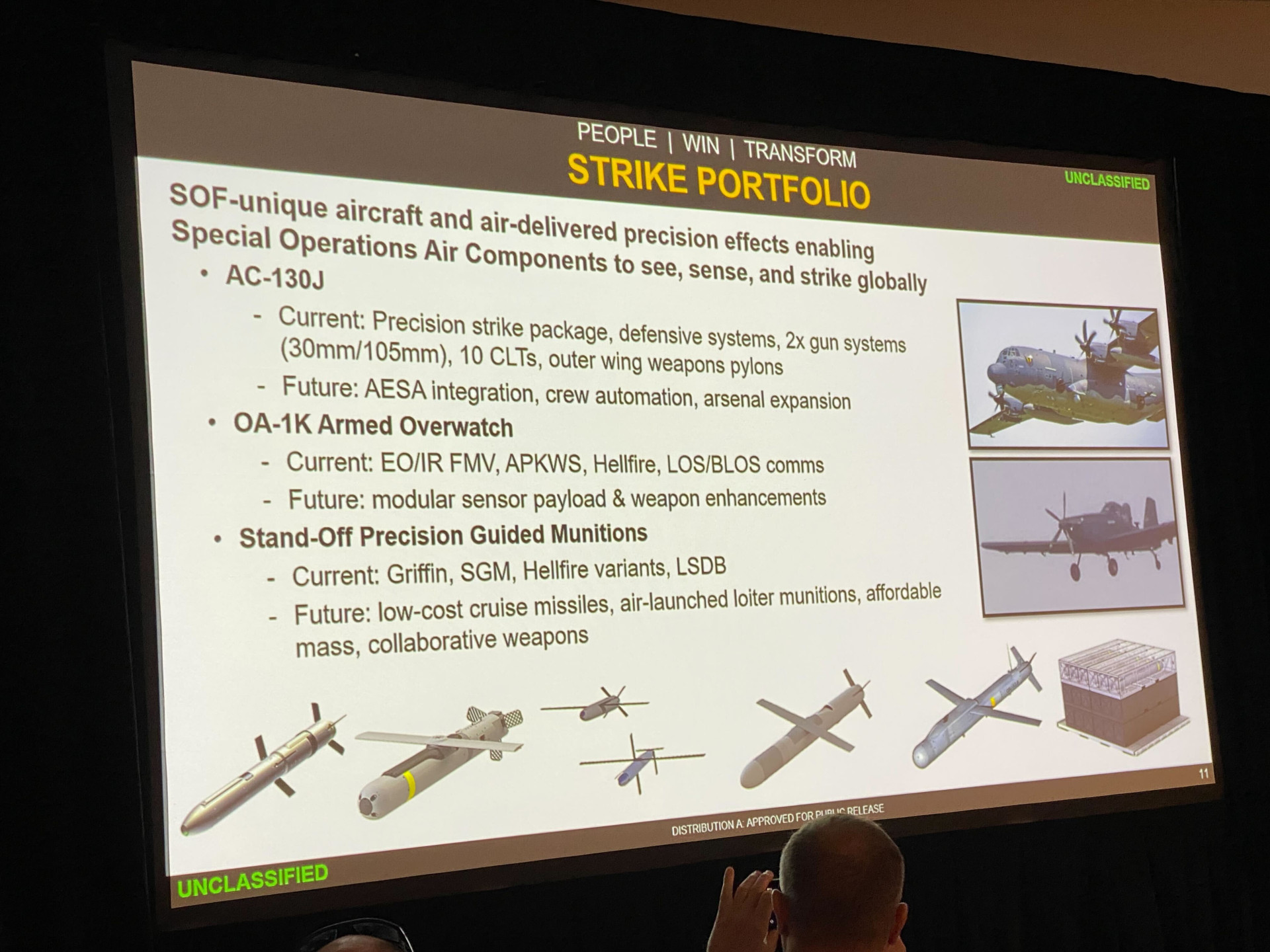
The SOPGM munition with the longest reach now is the GBU-39B/B Laser Small Diameter Bomb (LSDB), which cannot fit inside a CLT, has a stated maximum range of at least 40 nautical miles (around 46 miles or 74 kilometers). The stated range of the GBU-69/B Small Glide Munition, the weapon in the SOPGM portfolio with the longest reach that can also go inside a CLT, is at least 20 nautical miles (nearly 23 miles or around 37 kilometers).
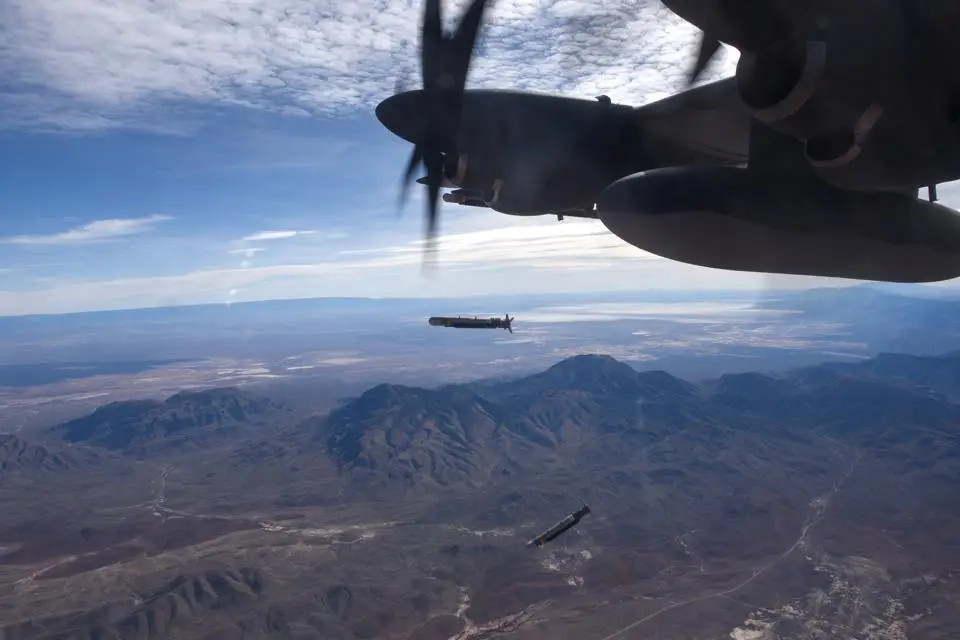
Whatever the Small Cruise Missile’s expected capabilities might be, the weapon is key to SOCOM’s future fixed-wing aviation plans.
“Moving forward in our family of … SOPGM we’re really looking at greater standoff [range],” Air Force Lt. Col. Matt Foertsch, the Materiel Lead for Integrated Strike Programs with SOCOM’s Program Executive Office for Fixed Wing aviation program, also told The War Zone and other attendees at the SOF Week conference today. “Low-cost cruise missiles are, I would say, our number one priority.”
New, longer-range stand-off strike capabilities are emerging as especially important to the future of Air Force Special Operations Command’s (AFSOC) AC-130J Ghostrider gunships, as The War Zone has explored in the past. The Ghostriders are currently more optimized for low-intensity operations in largely permissive airspace, and even then still operate almost exclusively at night to reduce their vulnerability to potential air defense threats. AFSOC is currently in the midst of a larger review of the configuration of the AC-130J’s armament package, which could see the aircraft lose their iconic 105mm howitzers. AFSOC also confirmed earlier this year that plans to test a laser directed energy weapon on one of these gunships, a concept that had also emerged from experience in counter-terrorism operations over the past two decades, have been scrapped.

The U.S. Marine Corps is now considering ditching its Harvest Hawk roll-on/roll-off armament kits for KC-130J tanker/transport aircraft for the same sorts of reasons.
“Rapid Dragon palletized effects kind of stuff is a big focus for us,” Lt. Col. Lee, the SOCOM Detachment 1 command, also noted today. Rapid Dragon is a modular palletized munitions system the Air Force has been developing as a way to enable C-130-type aircraft and other cargo planes to employ a variety of stand-off munitions, if required. AFSOC special operations C-130 variants have been heavily involved in the testing of this capability.

To date, the main weapons that have been tested in conjunction with Rapid Dragon are members of the AGM-158 Joint Air-to-Surface Standoff Missile (JASSM) family of cruise missiles. These are significantly larger and longer-range weapons than the Small Cruise Missile.
A smaller cruise missile, especially one that could fit inside a CLT, could be adaptable to other special operations aircraft beyond C-130 types, potentially including drones. There have already been discussions about the possibility of using MQ-9 Reapers as cruise missile launch platforms as one way to help ensure the relevance of those aging non-stealthy uncrewed aircraft in future major conflicts.

A mini-cruise missile like this could be of great interest elsewhere within the U.S. military, too. The U.S. Navy and the U.S. Air Force both put out contracting notices earlier this year expressing interest in new mini-cruise missiles for use against targets on land and at sea, and that could be small enough to fit inside the internal weapons bays on certain F-35 Joint Strike Fighter variants.
Just last week, the U.S. Marine Corps also disclosed that it has begun testing a new stand-off Long Range Attack Missile (LRAM) to arm its AH-1Z Viper attack helicopters, and potentially other platforms. That weapon is derived from a still unknown Air Force munition. With this in mind, there is a distinct possibility that LRAM could be related to SOCOM’s Small Cruise Missile. The Marine Corps has said in the past that LRAM’s desired maximum range is only 150 nautical miles (just over 170 miles or nearly 278 kilometers), which is shorter than what SOCOM appears to be looking at for Small Cruise Missile. A shorter-range version of the design SOCOM is testing could still be a potential candidate for LRAM. There are other possibilities from what LRAM’s parent design might be, as well, as The War Zone discussed in our initial reporting on the new Marine missile.
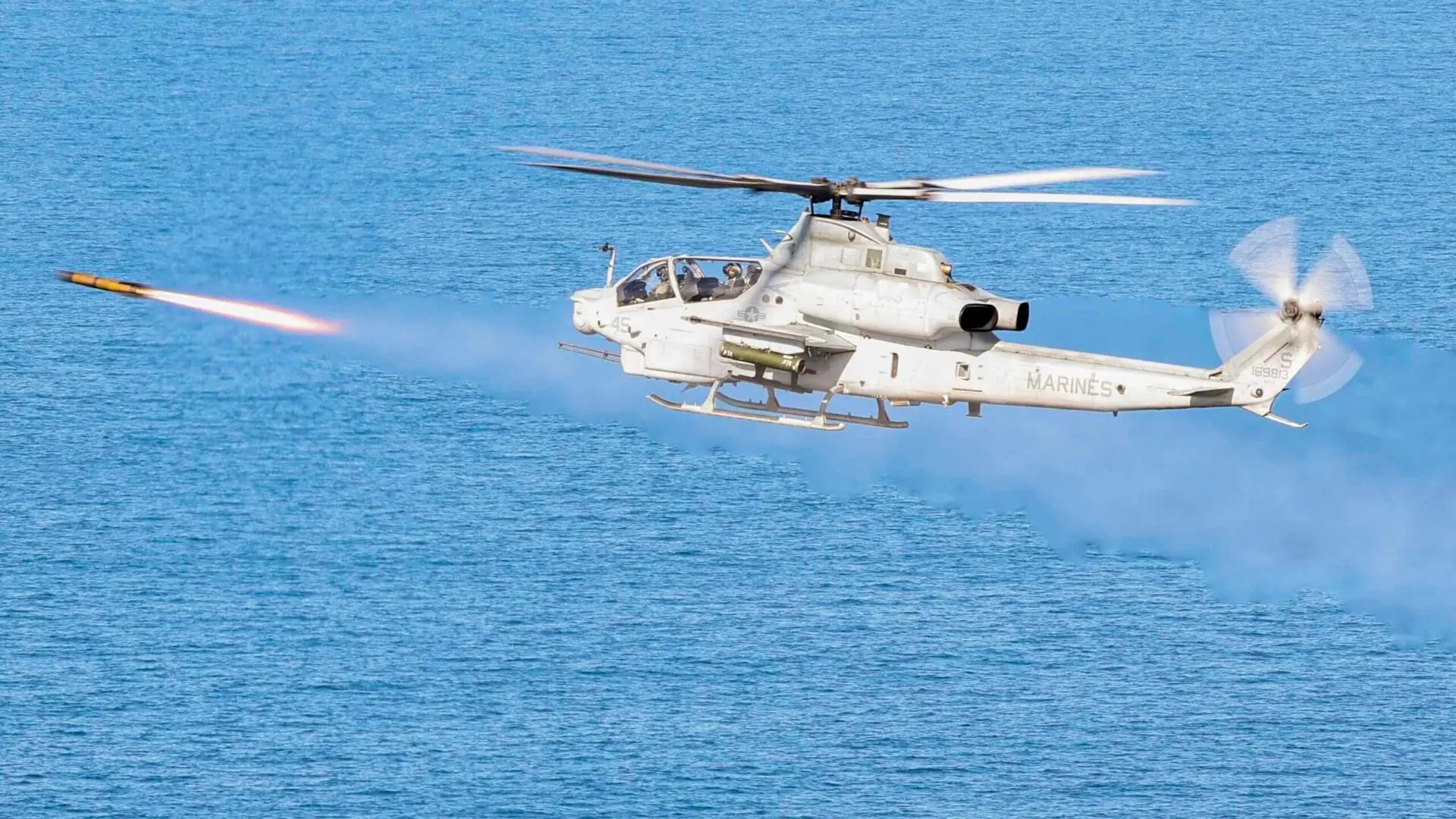
If nothing else, the Small Cruise Missile, which we have now gotten our first look at, appears set to be a key component of SOCOM’s future air-launched munition arsenal.
Contact the author: joe@twz.com
